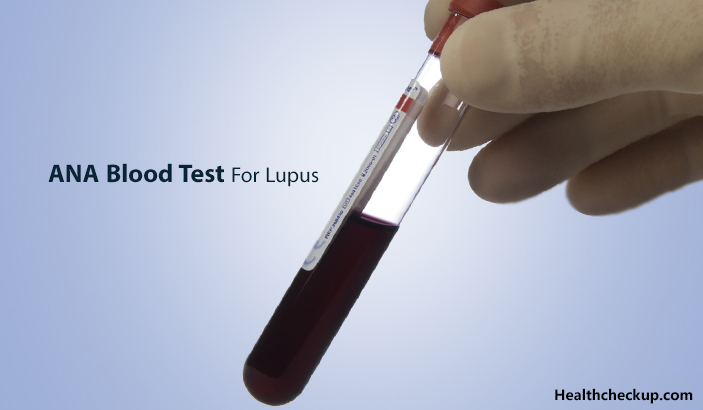The ANA Blood Test is one of the significant tests that help doctors diagnose lupus or Rheumatoid arthritis along with a physical examination and your other symptoms. In today’s article, we are going to share all the information needed about the ANA blood test, ANA blood test normal range, and what does positive and negative ANA blood test mean.
Antibodies Vs Autoantibodies
Antibodies are special proteins produced by our immune system. Their role in the body is to instruct the immune cells to target foreign cells and particles as a way to protect the body. However, sometimes, for often unknown reasons, the immune system starts producing a new type of special proteins called autoantibodies. The autoantibodies instruct the immune cells to attack the body’s own tissue, causing an autoimmune disease to develop. They are attacking the nucleus within the body’s own cells, damaging them. Systemic lupus erythematosus, rheumatoid arthritis, Sjorgen’s syndrome, and scleroderma are a few examples of autoimmune diseases that are most common today.
What Is ANA Blood Test And It’s Full Form?
The full form of ANA blood test is antinuclear antibodies (ANA). ANA blood test is used to detect and measure the levels of autoantibodies in the blood, thus helping the doctor to form a clear diagnosis. This test is especially useful in detecting the presence of systemic lupus erythematosus and other autoimmune disorders.
How Is An ANA Blood Test Done?
The ANA blood test is like any other blood test. It involves taking a blood sample from a vein in your arm using a sterile needle. No special preparations are needed for the ANA blood test. However, you will need to inform your doctor about any prescription and over-the-counter medications, including any dietary supplements that you might be using. Some medications, such as procainamide, hydralazine, and phenytoin, are known to cause an increase in the production of ANA in the body.
Why Is The ANA Blood Test Ordered?
ANA blood test is ordered if the doctor suspects the presence of an autoimmune disease. If you have been showing any signs and symptoms of an autoimmune disease, the ANA blood test will help distinguish if it is really an autoimmune disease that has been causing these symptoms or not. But ANA blood test alone is not enough to make a clear diagnosis that an autoimmune disease is present. It simply helps the diagnosis process. The problem with autoimmune diseases is the fact that they characterize themselves with a variety of symptoms.
The following symptoms are suspected of revealing the presence of autoimmune disease;
What Are The Normal ANA Blood Test Ranges?
In the ANA lab test, the results are reported as a titer. Titers are expressed as ratios. Ratios are obtained by diluting a portion of the blood sample with saline. Let’s look at a result expressed as 1:320. The result tells us that one blood sample has been diluted with 320 parts of saline, with this being the lowest ratio at which ANA can be detected. The lower, the dilution ratio at which ANA can be detected, the higher the titer and the presence of antibodies in the body.
ANA is found in around 5% of the healthy adult population, being more present in women, especially above the age of 65. But that does not point to an autoimmune disease is present. Titers of 1:80 or lower are considered to be somewhat normal, without any risk of an autoimmune disease.
What Does A Positive ANA Blood Test Indicate?
A positive ANA blood test points out the presence of an autoimmune disease. However, the patient should be showing previous symptoms of autoimmune disease for the results to be considered accurate. The results can be considered as “false-positive” as it happens in many cases where no symptoms are present despite the positive ANA blood test results. Or it might be a case of drug-induced ANAs being present if you have been taking any medications that we mentioned being able to stimulate the production of ANA in the body.
What Does A Negative ANA Blood Test Indicate?
If ANA cannot be detected by using an ANA blood test, this indicates a probable absence of an autoimmune disease. However, if you have been experiencing any symptoms that are characteristic of an autoimmune disease, but you have a negative ANA blood test, further testing will be needed. Some people with autoimmune diseases might get a negative test result for ANA, but a positive one for other antibodies.
Conclusion
ANA blood test is a commonly used test that helps measure any present antibodies in the body, and with that, detect the presence of a possible autoimmune disease Lupus or Rheumatoid Arthritis. The ANA blood test does not require any special preparations, nor does it carry any dangerous risks. It is performed in a few minutes, and it can tell your doctor a lot about your current health condition, explaining any present symptoms.
Doctor, author and fitness enthusiast, Ahmed Zayed, MD, is a surgery resident with a passion for helping people live a happy healthy life. He is the author of numerous health-related books and contributor to several medicine, health and wellbeing websites.









